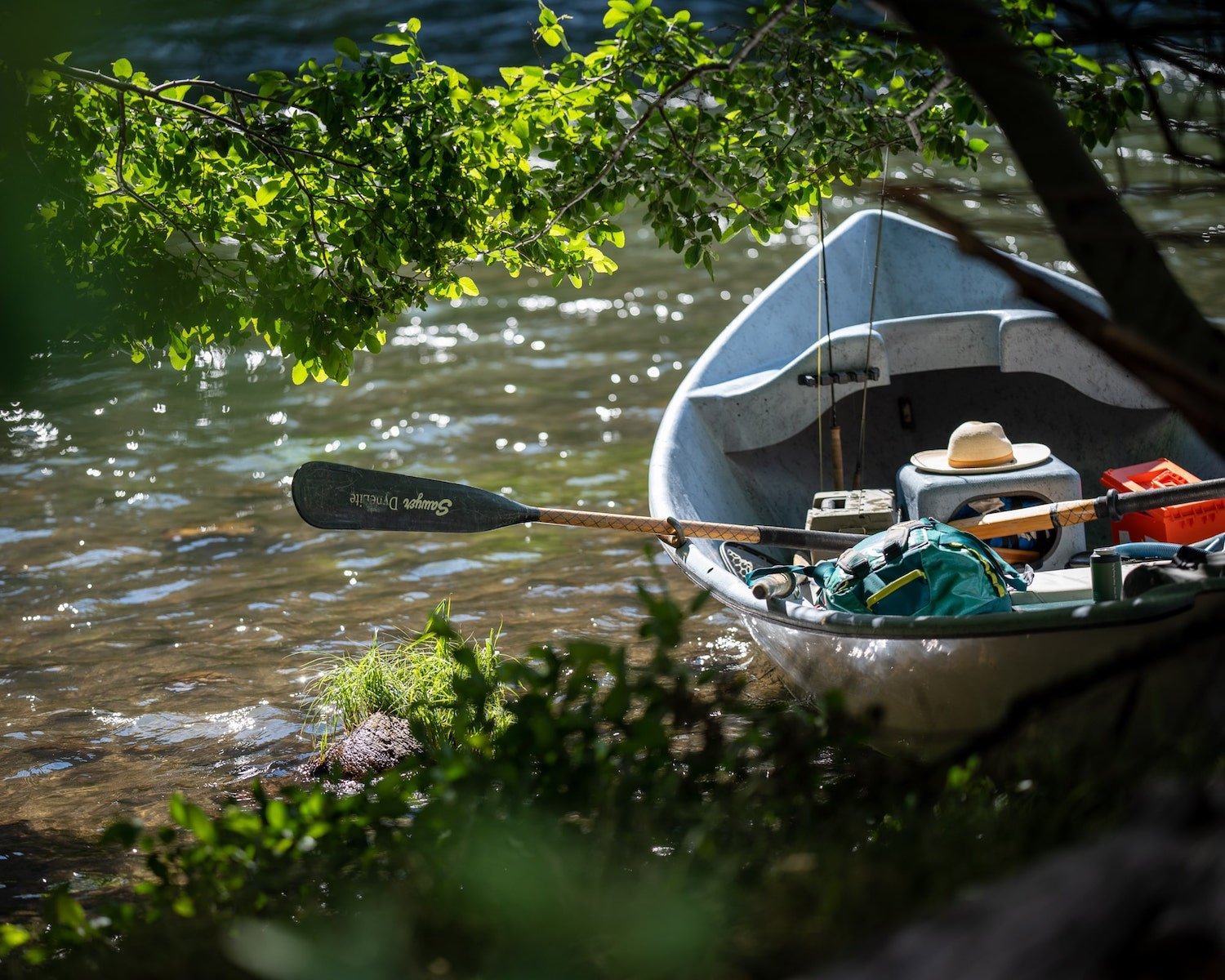Saving the Lower Deschutes in 1983
The Plan to Dam It
Little more than a century ago, the plan for the lower Deschutes River was to dam it. The Eastern Oregon Land Company bought 3,700 acres of Deschutes riverfront, from its confluence with the Columbia upstream more than 12 miles, along both sides of the river, canyon rim to rim. Engineers completed plans for not one, but two dams. The first would have been built near the mouth, the second some further distance upstream. But economics kept the dams from being built. For more than half a century, the land was used for cattle grazing.
Along western trout streams, cows and fish generally don’t peacefully coexist. By the early 1980’s, the look of the lower Deschutes reflected this ecological reality. Long gravel bars in the shallows, and little to no vegetation, had taken its toll on angling opportunities. Then, in 1983, one angler who loved the beleaguered river somehow caught wind of another kind of opportunity. Those 3,700 acres were going up for sale.
A Team Effort
Doug Robertson passed away in 2016 at the age of 69. Perhaps his biggest accomplishment as a Deschutes fisherman was not landing a lunker redside. It began with a phone call to then Oregon Governor Vic Atiyeh. The Governor liked to fish the Deschutes too. Would the state somehow be able to get behind an effort to purchase the land?
Governor Vic Atiyeh, releasing a Deschutes redside, 1983.
Photo courtesy of Pacific University library, Atiyeh collection.
Idaho writer Cort Conley observed, “There’s no limit to what can be accomplished so long as no one cares who gets the credit.” Behind the scenes, Governor Atiyeh made countless phone calls to secure state funding. Doug Robertson negotiated a fair price for the land. The Oregon Wildlife Heritage Foundation was formed to help raise money to make the purchase. Hundreds of Oregonians wrote checks large and small. Still more emptied their pockets of all manner of loose change. Line items were added to budgets from state and federal agencies. Those 3,700 acres were purchased in 1983 for $1.6 million. The political momentum created by that initial campaign continued to grow. In 1986, The 5,000-plus acres of the Sharp Ranch were purchased via a second campaign from the Oregon Wildlife Heritage Foundation. The east side of the river from Shearar’s Bridge to Heritage Landing was now owned by, and open to, the public. As the years rolled by, public access to the canyon lands of the lower Deschutes River has only increased.
A Legacy of Good Care
Today ODFW manages the 18,724 acre Lower Deschutes Wildlife Area. Permanent habitat protection for mule deer, elk, bighorn sheep and upland game birds expands opportunities for hunters, hikers, boaters and bikers. For anglers, the chance to watch caddis flies swirl above a copse of riverside alders–and see trout rise to those bugs–might also provide inspiration. Most of us tend to see the riot of life on a river as pure nature, a phenomenon that occurs outside the purview of humans. But those alders and what they provide–shade to cool the water, habitat for bugs, and therefore food for trout–are the result of the work of a critical mass of people who cared deeply about the lower Deschutes.
In a 1986 letter to the Oregon Wildlife Heritage Foundation, former Governor Vic Atiyeh recognized the possibility that people and the natural world could enjoy a mutually beneficial relationship, and that Oregonians had set a historic precedent in protecting the lower river: “The thrill and pride you introduced into the public acquisition of the Lower Deschutes must rank among the most scintillating events in our history.”
That was 38 years ago. years from now, what will be the legacy of those who care about the lower Deschutes? A good stretch of the lower Deschutes’ canyon lands have been protected. Now it’s time to do the same for the water in the river itself. Take the time to write a letter to Oregon’s Governor, Tina Kotek. The DRA and its few thousand supporters are mounting a campaign to put the cleanest, coldest water possible back into the lower river. The Oregon Department of Environmental Quality has the enforcement authority to make this happen. It just needs a little nudge from the Governor. The next generation, sitting in the shade of those alders in 2062, will appreciate the good work of their elders, who let the river’s nature flourish. More thrill and pride, more scintillating events. Let’s make this happen.
More From The Blog
Subscribe the the DRA Newsletter
The Deschutes River Alliance is your focused voice to protect the lower Deschutes River, its cold water flows and the fish and wildlife that are sustained by them. We send regular emails with important data and news about the lower Deschutes River. We will not sell or loan your contact information to others.
How to Support the DRA
Everyone wants clean, healthy water in the Deschutes River. Oregonians cherish our clean and healthy waterways to provide drinking water, wildlife habitat and recreational activities. The lower Deschutes River is a federally designated Wild & Scenic River, and a national treasure. It must be protected for the environmental and economic health of Central Oregon. We believe by working together we can return the lower Deschutes River to full health.






















